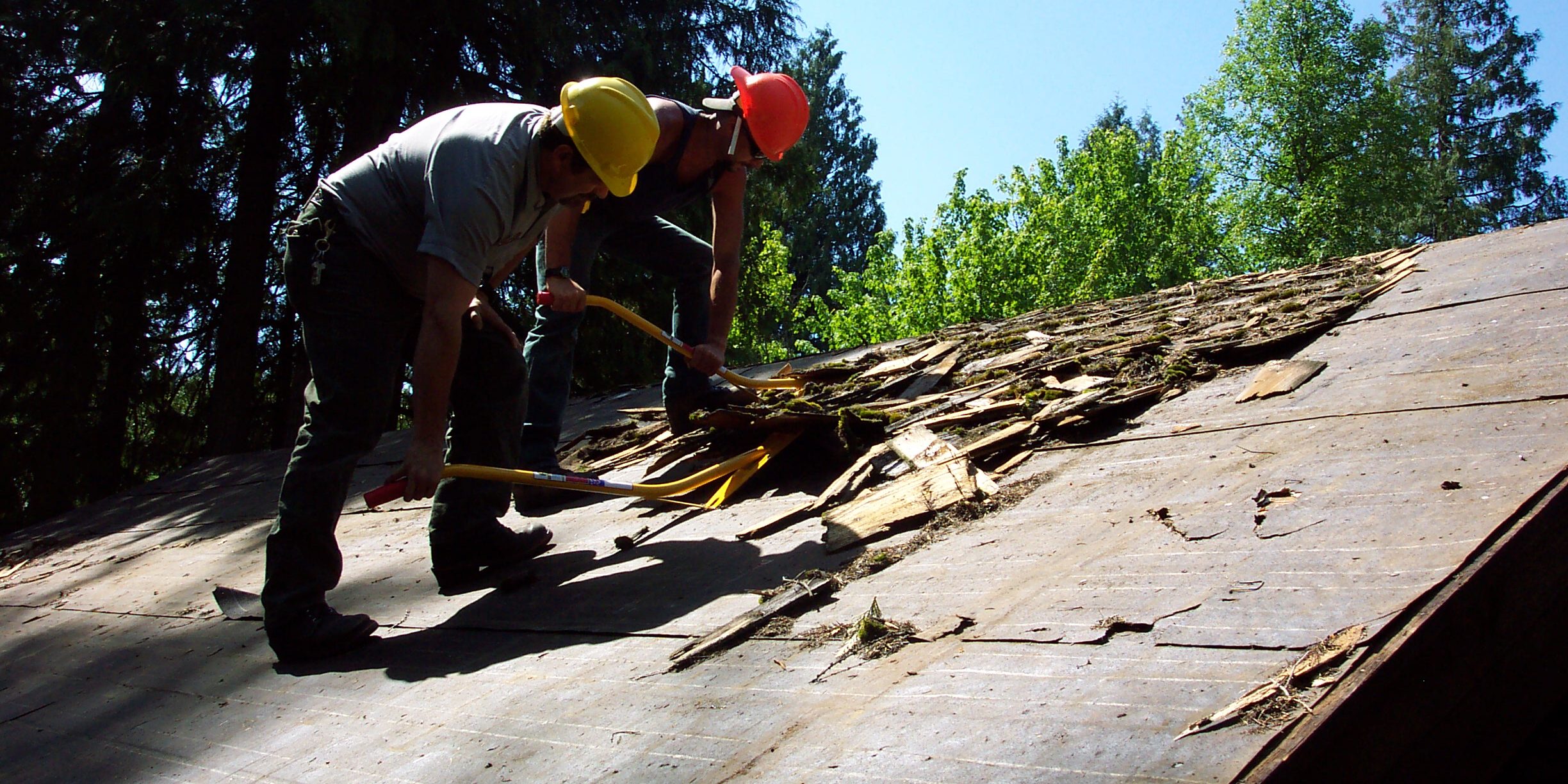If you live in Florida and need to replace your roof, there are a few ways to ensure your insurance company will pay. In this article, we’ll discuss the steps you should take to ensure your insurance provider covers all or part of the cost of replacing your roof.

The 25% roof replacement rule is a guideline used by some insurance companies in Florida to determine whether a roof should be repaired or replaced under a homeohomeowner’srance policy.
How do you get insurance to pay for a roof replacement in Florida?
To get insurance for roof replacement in Florida, you must show that 25% of the roof is damaged. The rule states that if more than 25% of a roof is damaged, the insurance company typically pays for a complete roof replacement rather than just repairs.
The 25% threshold is used because, in many cases, repairing more than a quarter of a roof can be more expensive than simply replacing the entire roof. Additionally, repairing a damaged roof may not always fully address the underlying issues that caused the damage in the first place, which could lead to further damage down the line.
It’s important to note that the 25% rule is not a legal requirement, and not all insurance companies in Florida use this guideline. Additionally, some insurance policies may have different thresholds or requirements for roof repairs and replacements.
SB 4D provides that if a roof was previously built, repaired, or replaced in compliance with the 2007 Florida Building Code or any subsequent editions of the Florida Building Code, if at least 25% of the roof is to subsequently be repaired, replaced, or recovered, only the part being repaired, replaced, or recovered must be constructed in accordance with the current Florida Building Code.
If you have experienced roof damage in Florida, reviewing your insurance policy and understanding your coverage and deductible before filing a claim is essential. A qualified roofing contractor can also help you assess the extent of the damage and provide repair or replacement estimates that you can use when working with your insurance company.
Before you file an insurance claim for your roof replacement, it’s essential to understand what is and isn’t required by homeowners insurance policies in Florida. Generally, most homeowners cover damage caused by windstorms, hail, lightning strikes, and other natural disasters. However, they typically don’t damage from a lack of maintenance or normal wear and tear. If your roof is old and has been inadequately maintained over the years, you may be responsible for some or all of the costs associated with replacing it.
When filing an insurance claim for a roof replacement, it’s essential to document any evidence of structural damage caused by events covered under your policy. Take pictures or videos of any visible damage on your home’s interior and exterior parts, as these will help support your claim. Additionally, having a professional inspection done may also help to prove that there was indeed structural damage due to an insured event like a storm or hurricane—which could then be used as leverage when negotiating with adjusters from your insurer.
Suppose you decide to pursue a claim after documenting any evidence of physical damage on your home’s home surfaces. In that case, you’ll have loc authorities (for storm-related perils) and adjusters from your homeohomeowner’srance provider. For them to process a potential claim related to roof replacement—you’ll have to provide proof that there was indeed structural damage due to an insured event such as strong winds or hail storms—and not simply aging materials that had reached their expiration date through regular wear & tear over time without adequate maintenance being provided.
In addition to providing images/videos/inspections that demonstrate physical signs of property destruction due to storms in Florida—several supplementary documents can be helpful when filing an insurance claim related to needing a new roof, including estimates/receipts/invoices from contractors; certification letters from authorized experts who have inspected the damaged areas; bills & invoices related directly caused by the incident (such as emergency services); detailed accountings regarding any personal items lost during the incident; reports from independent appraisers; etc. Together, these comments can provide solid evidence of exactly what coverage should be given for replacing one due to natural disasters—whether it’s single roofs, tile roofs, metal roofs, or other types destroyed during these catastrophic events.
Here are some steps to take to get insurance to pay for roof replacement in Florida:
- Review your insurance policy: Before filing a claim, review your insurance policy to understand what is covered and excluded. Pay particular attention to the types of damage covered and any deductible or coverage limitations.
- Document the damage: Take photos or videos of the damage to your roof. This documentation will be helpful when filing a claim and working with your insurance company. More than 25% of the roof must be damaged for complete replacement.
- File a claim: Contact your insurance company and file a claim for roof damage. Provide all relevant information and documentation, including the date of the damage and its extent.
- Schedule an inspection: Your insurance company will likely schedule an examination with an adjuster to assess the damage to your roof. Be present during the inspection and provide additional information or documentation as needed.
- Get repair estimates: Obtain repair estimates from qualified roofing contractors. Share these estimates with your insurance adjuster, who will use them to determine the appropriate coverage for your claim.
- Negotiate with your insurance company: If you feel that the amount offered by your insurance company is insufficient, negotiate with your adjuster. Provide additional documentation or estimates as needed to support your claim.
- Hire a public adjuster: If you have difficulty getting your insurance company to pay for the total roof replacement cost, consider hiring a public adjuster. These professionals can help you negotiate with your insurance company and ensure that you receive fair compensation.
- Make repairs: Once your claim has been approved and you have received payment from your insurance company, hire a qualified roofing contractor to make the necessary repairs or replacements to your roof.
It’s important to note that getting insurance to pay for roof replacement in Florida can vary depending on your policy, the extent of the damage, and other factors. Working with a qualified roofing contractor and a public adjuster can help ensure you receive fair compensation for your claim.
By following these tips and tricks when attempting to use insurance to get a new roof installed in Florida, you’re likely to ensure reimbursement is provided while avoiding unnecessary out-of-pocket expenses related to this kind of property reconstruction work within The Sunshine State!
